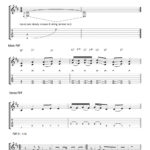For musicians, especially guitar players venturing into digital music production, connecting various instruments to a computer or iOS device is crucial. A common question arises regarding the compatibility of Keyboard Guitars, microphones, and MIDI keyboards with audio interfaces. This article clarifies how to effectively integrate these tools, focusing on using USB audio interfaces for a streamlined setup.
Modern USB audio interfaces are inherently capable of handling MIDI data alongside audio signals. This means if you’re using a keyboard guitar or MIDI keyboard with a USB connection, a standard two-channel USB audio interface will suffice. You won’t necessarily need a dedicated ‘MIDI audio interface’ unless you specifically require older MIDI DIN connectivity.
To connect your USB keyboard guitar or MIDI keyboard alongside a USB audio interface to an iOS device, a simple solution involves utilizing a powered USB hub and Apple’s Camera Connection Kit (CCK). The CCK allows USB devices to interface with your iPad or iPhone, and the powered USB hub overcomes power limitations and expands connectivity. This setup enables you to connect both your audio interface and any USB MIDI devices, such as keyboard controllers, drum machines, or synthesizers, that operate via USB rather than traditional MIDI DIN connectors.
For musicians with older synthesizers or MIDI devices that utilize the 5-pin MIDI DIN connectors, USB to MIDI DIN adapter cables are readily available. These adapters bridge the gap, allowing older MIDI equipment to integrate into a modern USB-centric setup. This versatility ensures that regardless of your gear’s age or connectivity type, you can create a unified music production environment.
It’s important to understand that audio interfaces, even those marketed as ‘MIDI interfaces’ or those featuring MIDI DIN ports, primarily function as data passthrough devices. They don’t process MIDI data themselves. Instead, they simply facilitate the transmission of data – whether audio or MIDI – through their ports, be it USB or DIN. The actual processing and interpretation of this data occur within the software you are using, such as DAW (Digital Audio Workstation) applications like AuriaPro or GarageBand. Therefore, when selecting an audio interface for your keyboard guitar and other MIDI devices, focus on the quality of audio input and output and the necessary connectivity options, rather than being overly concerned about dedicated MIDI processing capabilities within the interface itself.
In conclusion, for integrating a keyboard guitar, microphone, and USB MIDI devices into a digital setup, a standard USB audio interface is generally sufficient. By understanding the data passthrough nature of these interfaces and utilizing tools like USB hubs and adapter cables, musicians can create flexible and comprehensive music production systems, whether on a computer or iOS platform.

